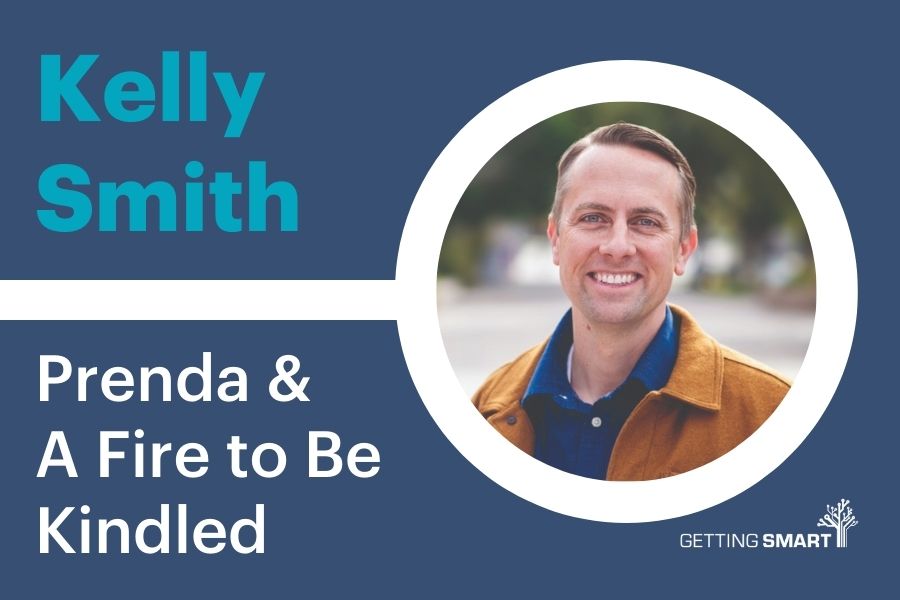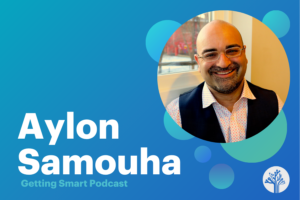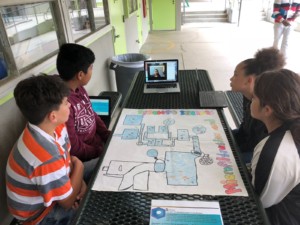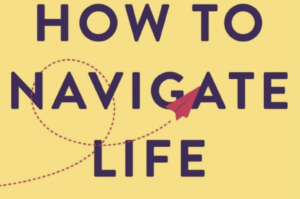Kelly Smith on Prenda and a Fire to Be Kindled
Key Points
-
You can let the students set their own goals and they tend to choose goals more aggressively than they otherwise would have been.
-
Microschools are not the only option but, often, they are a great one.

Are you interested in attending one of the field’s largest gatherings of K-12 education innovators? The Aurora Institute Symposium 2023 promises community, lessons about education innovation from the field, and the latest research and policy to support education transformation. Find out more here.
On this episode of the Getting Smart Podcast, Tom Vander Ark is joined by Kelly Smith, CEO and Founder of Prenda and author of the great new book A Fire to be Kindled: How a Generation of Empowered Learners Can Lead Meaningful Lives and Move Humanity Forward.
A microschool is just one valid option among others that work for people … and I think it’s going to be huge.
Kelly Smith
Transcript
Tom Vander Ark: New school development, particularly new schools developed in networks, is the most important development in American Public Education in the last thirty years. Recently, many of these new schools have been developed as very small micro schools—schools that empower learners and families. Today, we’re talking about micro schools and micro school networks with Kelly Smith.
Tom Vander Ark: CEO of Prenda. I’m Tom Vander Ark, and you’re listening to the Getting Smart podcast. Kelly, welcome! We love the Prenda model because, unlike many other micro schools that started in the last five or six years and relied solely on traditional content and methods, you’ve developed an intentional model. Tell us about the four learning modes and what school looks like at Prenda.
Kelly Smith: Thanks, Tom. It’s great to be here.
Tom Vander Ark: Most micro schools started in the last five or six years and relied solely on traditional content and methods. You really developed an intentional model. Tell us about the four learning modes and what school looks like at Prenda.
Kelly Smith: Yeah, absolutely. I think it’s important for people to understand where this came from. I didn’t have the honor of coming up through a traditional education background, so in some ways, that’s been a disadvantage. I’ve had to read the research and learn everything, but in other ways, it’s been an advantage because, as an adult learner since leaving grad school years ago, I’ve followed a similar pattern to learning. I set a goal, make a decision about what I want, and then figure out what it will take to accomplish that goal.
Tom Vander Ark: I know the feeling.
Kelly Smith: At its core, Prenda is about helping young people become the kind of learners who apply their skills equally well in vector calculus as in changing car brakes, mastering a sport, a musical instrument, or building strong relationships. Humans are built for learning, and we aim to structure an environment that brings out their natural abilities.
To make that less abstract, we designed a model with all the elements of educational reform that many people have discussed, written about, and researched. We have what we call Conquer Mode, where kids set big goals for the semester or year. Our tools and software help them break down those goals into bite-sized pieces, all with a focus on mastery. Instead of thinking about fractions for a set time, the goal is to master adding fractions with the same denominator, and we measure that.
Tom Vander Ark: I can see that.
Kelly Smith: Another aspect is Inquiry Led. In what we call Collaborate Mode, kids lead Socratic discussions, debates, math puzzles, or science experiments. It’s hands-on and constructivist, encouraging kids to think critically and take ownership of their education. Then, there’s Create Mode, which is project-based learning. We give them a library of prompts, and they work together to create something. Finally, Connect Mode helps kids see each other as allies in learning, focusing on community, mindset, and purpose—elements often associated with social-emotional learning but integrated throughout our system.
Tom Vander Ark: I love those components. Are they stitched together in a common way across your sites? Does each site start with one and move to another, like Conquer Mode in the morning and Create Mode in the afternoon?
Kelly Smith: Great question. Initially, we thought everyone would be like me—I was the first learning guide and started a micro school in my house in 2018. Without a background in running a class, I was making it up as I went along. Many of the first micro schools followed my pattern, but now, across thousands of micro schools, we see a variety. Some start with Conquer Mode to get the “vegetables” out of the way and then move to the more engaging parts. But each micro school tailors it to the needs of their community
Kelly Smith: We started with the assumption that people would be like me—I was the first learning guide and began a micro school in my house in 2018. Since I didn’t have a background in running a classroom, I was essentially making it up as I went along. The first few micro schools followed my approach, but now, with hundreds and even thousands of micro schools, we see a lot of diversity. Some guides prefer starting the day with Conquer Mode, getting the “vegetables” out of the way first, then moving on to the more engaging parts. However, each micro school tailors the routine to the unique needs of its community.
Tom Vander Ark: I noticed these empowerment dimensions, or design principles, on your website. They create a beautiful framework. How do they help the learning guides?
Kelly Smith: We started with a principle from design thinking, which involves being very clear from the beginning about what we aim to accomplish. Prenda’s mission is simple—two words: empower learners. This mission represents a shift I alluded to earlier, helping kids transition from being passive recipients of school to being active, empowered learners who set goals and use learning as a tool to achieve them. But we realized that if empowering learners was our mission, we needed to find a way to measure it.
We use metrics like locus of control, engagement, and growth mindset, drawing from psychology. We survey kids to ask them directly, and it’s fascinating to see the insights they provide, even from very young ages. It’s not perfect, but it’s an evolution, and it’s something we’ll keep refining as we work to understand if we’re achieving our mission. While we measure test scores, our main goal is truly empowered learners.
Tom Vander Ark: That’s really the theme of your new book, isn’t it? Are most of these micro schools home-based with about five to six kids on average?
Kelly Smith: Yes, that’s about right. Our average is 7.5 students per micro school, though during the pandemic, the numbers were higher as parents sought alternatives. We see a variety, with some groups as small as two or three. Often, it starts with a mom working with her own child in her home, then expanding to include friends or family. Homes are often the easiest place to start, but we’ve also seen micro schools in churches, community centers, dance studios—places available during the day and that work well for hosting micro schools.
Tom Vander Ark: You began Prenda in 2018, after years of tutoring and some frustration with traditional education for your own kids, right?
Kelly Smith: That’s right. I have four kids, and it’s been quite a journey. We scaled significantly during the pandemic, particularly in Arizona, where we now have hundreds of sites. We’re also in other states like New Hampshire, Colorado, Kansas, and Louisiana, often working through partnerships with districts, charter school networks, or school choice programs. Our goal has always been to make the program accessible, partnering with entities that can help reduce costs for families.
Tom Vander Ark: And do you have Empowerment Scholarship Account (ESA) sites in Arizona?
Kelly Smith: Yes, we do. We gave our learning guides in Arizona the option to switch, and about 80% made the transition. So, a significant number of our micro schools are now ESA sites. Some still prefer to operate within the system, but the majority have opted for the ESA route.
Tom Vander Ark: And these schools all serve grades K–8, correct?
Kelly Smith: That’s correct. Prenda operates within the K–8 space. We have served all four of my kids, and one just graduated from high school. He was actually a bit older when I started Prenda, so he didn’t experience the micro school model in the same way as my other children, who did attend Prenda micro schools at different stages of their educational journey.
Tom Vander Ark: We’ve had the opportunity to help communities create micro schools, both elementary and high school. High school can be a different challenge. Have you thought about what a micro high school would look like?
Kelly Smith: We think about it all the time. Our community often requests it, and there are some parents who feel quite strongly about wanting a Prenda high school. They find so much value in the Prenda experience and want it to continue. High school, however, comes with additional complexities. Older students typically want more options, extracurriculars, and social experiences, which are feasible in a micro school environment but require a different structure.
Another challenge with high school is the need for transcripts, graduation requirements, and college readiness. Parents and regulators expect a degree of formality at that stage. The concept of “escalators” is useful here—we tell parents during K–8 that putting their child on an escalator shouldn’t mean passively waiting for them to reach the end. They should actively engage their child in learning. But with high school, there’s this additional escalator that connects to college and eventually to a career, making parents feel the stakes are higher.
Tom Vander Ark: The last couple of years have been a rollercoaster, especially for Prenda, given you launched just before the pandemic. How has Prenda fared post-pandemic?
Kelly Smith: I remember having conversations in early 2018 about what I was seeing in my house with kids who had gone from disengaged to engaged, from lacking confidence to feeling capable. I had this conviction that this model would work, and I thought it would take 10 or 20 years to gain traction. But then the pandemic hit, and suddenly, everyone was talking about micro schools. It happened much faster than I anticipated, bringing growth and operational challenges.
After the initial boom, the market adjusted, and while we haven’t reached that 10-year horizon I originally envisioned, we’re definitely further along than we might have been otherwise. We’re also seeing a second macro shift with school choice programs, where funding is increasingly directed to parents. Years ago, this seemed unlikely, but now it’s happening, and we’re processing students through these programs. It’s an exciting, albeit unpredictable, time for us.
Tom Vander Ark: Speaking of the pandemic, it looks like you did some writing during that time. Congratulations on your new book, A Fire to Be Kindled: How a Generation of Empowered Learners Can Lead Meaningful Lives and Move Humanity Forward.
Kelly Smith: Thank you, Tom.
Tom Vander Ark: It’s an ambitious title and an inspiring book. I love how the title reaches back into classical education—a little bit of Plutarch there. Why does the idea of “a fire to be kindled rather than a vessel to be filled” resonate with you?
Kelly Smith: It may sound cliché, and I’m sure some listeners might roll their eyes, but I take that concept seriously. I think Plutarch was right. Depending on which metaphor we adopt, it leads to entirely different educational approaches. If we think of the mind as a fire to be kindled, it’s more about igniting curiosity and passion, which is hard work.
Starting a fire from scratch can be chaotic, unpredictable, and context-dependent, but once it ignites, it’s deeply satisfying. There’s this moment of exhilaration when learning truly “clicks.” For example, at Prenda, we allow kids to set ambitious goals, and they often exceed expectations, not because we set limits, but because they take ownership. They struggle, they fail, they adjust, and eventually, they succeed. It’s like lighting a fire.
On the other hand, if we treat the mind as a vessel to be filled, it’s predictable and straightforward—pour information in, and it stays. Adults prefer this approach because it’s easier to control, but it doesn’t kindle real passion or curiosity. I had wonderful educators in my life, but the system often defaulted to filling vessels, which didn’t light a fire in me as a learner.
Tom Vander Ark: I love how your book takes empowerment seriously. Many schools talk about empowerment and agency, but they still emphasize content consumption and compliance. I appreciate how your book truly reinforces empowerment, building on values that support that vision. Let’s talk about some of those values. Your book has a great chapter called “Dare Greatly.” Why is that a core value, and what might it look like in a student’s day?
Kelly Smith: Early in the year, we have students do an exercise called “Future You,” a mandatory prompt in our Create Mode. Students make an artistic representation of their future self and then have a conversation with it. If they’re 12, they might create a version of themselves at 42 and reflect on the life they want to live. This exercise is about answering the question, “Why?” and connecting them to a purpose.
At Prenda, we encourage kids to ask “Why?” and to pursue what they’re passionate about. When students feel connected to a goal that resonates with their unique skills, abilities, and motivations, they’re willing to put in the effort. But if they’re only there because they’re required to be, it’s a very different experience. We want students to dare greatly by setting goals that challenge them and reflect what they genuinely want to achieve.
Tom Vander Ark: Another value you mention is “Figure It Out,” which speaks to problem-solving and not giving kids the easy answers. It ties into the value of “Learning Over Comfort.” How do these values play out?
Kelly Smith: Absolutely. “Figure It Out” is about fostering resourcefulness. Some might interpret it as dismissive, like saying, “You’re on your own.” But to us, it’s a message of empowerment. We trust that students can ask questions, be scrappy, seek out resources, and solve problems. If I solve every problem for them, I become a crutch, preventing them from discovering their own capabilities.
So, instead of stepping in, we might encourage students to talk to a peer or try a different approach. Learning is a process, and we want them to embrace problem-solving. Then there’s “Learning Over Comfort.” Learning is hard—there’s a reason evolution and biology make us resist it. But if we recognize that and push through, we gain the growth that comes from overcoming challenges. It’s about developing a growth mindset and a commitment to learning, even when it’s uncomfortable.
Tom Vander Ark: This reminds me of Acton Academy’s approach, where guides don’t provide answers but ask questions instead. Was that something you took from Acton?
Kelly Smith: Definitely, and credit goes to the Sandifers at Acton and to Socrates before them. This approach has been around for a long time, but it’s incredibly challenging to execute, especially if you know the answers. I learned this during a coding club I facilitated. I couldn’t find a professional coder to help, so I asked some librarians to run it, even though they had no coding experience. Surprisingly, the librarians did a fantastic job because all they could do was ask questions. They were learners alongside the students, which created a truly engaging environment. That coding club outperformed others led by experts because, without answers, the librarians could only encourage curiosity.
Tom Vander Ark: The coding club story brings up an important point. As kids move into middle and high school, the world gets more complex, and it’s crucial to invite them into complex problems that don’t have clear answers. I sense that spirit in your book—the idea of inviting kids into difficult questions with a “how might we” mindset.
Kelly Smith: Yes, I believe in the potential of young people to lead meaningful lives and contribute to solving the world’s big problems. Many issues we, as adults, haven’t solved could benefit from a fresh perspective. So, I’ll ask students questions I don’t know the answer to, and we’ll practice finding reliable sources and articulating good questions. It’s much safer and more predictable to simply cover standards, but embracing ambiguity can light a fire in learners. When kids realize that even adults don’t know everything, it’s empowering and shows them that they can think critically and contribute meaningfully.
Tom Vander Ark: Who is this book for? Is it intended for Prenda families and potential Prenda families?
Kelly Smith: I initially wrote it for educators—people invested in serving kids and helping them become lifelong learners. But as the book developed, it took on a life of its own. My editor actually divided it into two parts. The first part, which became the book, is for anyone who’s interested in asking, “Am I living a meaningful life? Am I contributing to the world in the way I want to?” It’s valuable for people at any age, from young learners to those in their eighties, and for anyone interested in an elevated conversation about learning and purpose.
The principles are universal, and my hope is that the book reaches beyond Prenda, helping educators, families, and individuals everywhere think differently about learning and empowerment.
Tom Vander Ark: It’s a great book, Kelly. I appreciate intentional models that are simple yet profound enough for learners to understand and adopt. The book beautifully illustrates the Prenda model and mindset, making it a gift to both your community and the education sector—a modern and meaningful view of what education can be.
Kelly Smith: Thank you, Tom. I appreciate that, and I think it’s interesting to note that while the book feels modern, it’s rooted in ideas that go back thousands of years.
Tom Vander Ark: The chapters on starting with heart and building a foundation of trust emphasize the importance of relationships in the learning journey.
Kelly Smith: Absolutely. That means a lot coming from you, Tom. You’ve been a leader in this space, and I’m grateful to have this chance to share the book and to hopefully inspire conversations that go beyond what I can answer alone.
Tom Vander Ark: What’s next for Prenda? Are you rolling out new features or expanding to new regions?
Kelly Smith: Right now, our focus is on supporting communities in new states with universal or expanded ESA programs. You’ll see Prenda in Florida and other states, and we’re continuously evolving the learning model and expanding our curriculum library. We want to equip people who may not have a formal education background, as I didn’t in 2018, to create life-changing experiences for young learners.
Tom Vander Ark: As we wrap up, what’s the main takeaway you’d like our listeners to remember? Is it empowerment for learners?
Kelly Smith: Yes, empowerment is at the heart of Prenda and this book. But I’d also encourage listeners to think about what it means to be an empowered learner themselves. Every time we embrace learning and curiosity, we make the world a little better.
Tom Vander Ark: Who would you like to acknowledge? Who helped you get Prenda or this book to the finish line?
Kelly Smith: I’d have to thank so many people—mentors, family, friends, and the thousands of people who’ve been part of the Prenda journey. Their support, guidance, and encouragement have been invaluable, and I’m honored to work with each of them.
Tom Vander Ark: Where can people learn more about Prenda?
Kelly Smith: The easiest way is Prenda.com, and you can find my book, A Fire to Be Kindled, on Amazon or at your favorite independent bookstore.
Tom Vander Ark: Thank you for your contribution to the micro school movement and for writing this inspiring book, Kelly. It’s great to reconnect.
Kelly Smith: Thank you, Tom. I appreciate the chance to be here.
Tom Vander Ark: Thank you to Mason Pasha, our producer, and the entire Getting Smart team for making this possible. Until next week, keep learning, keep leading, keep innovating for equity.
Book Background
Can intentional, messy, audacious learning unlock the power to live meaningfully and contribute to the world?
The human capacity for learning has enormous potential, but most of us are stuck with the passive belief that learn- ing is “a thing that happens to you.” Imagine if instead humans made the deliberate choice to learn rather than checking boxes on a syllabus. How can parents, educators, and all of us unleash real learning?
This book offers a fresh approach: the Empowered Learner, helping anyone own their genius and accomplish their goals. A Fire to Be Kindled takes a practical look at the structures surrounding students and explains the concepts helping thousands of children become Empowered Learners at Prenda microschools.
Links:








0 Comments
Leave a Comment
Your email address will not be published. All fields are required.